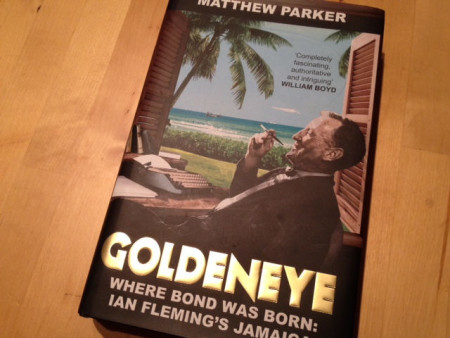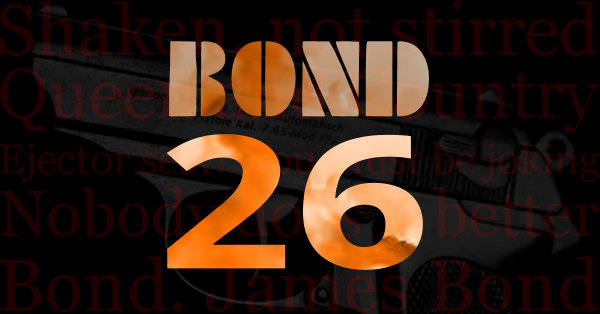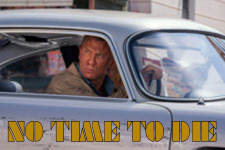Matthew Parker’s new book is both a biography of Ian Fleming from when he built Goldeneye on wards and the history of Jamaica during the period leading to independence and just after.

I can remember when I first read the James Bond novels how little information there was about Ian Fleming. My 1960’s Pan edition of Casino Royale carries no information about the author at all, while a 1977 Triad Panther edition of Dr No, which I think was the first 007 book I bought new, includes an overview of his life that hardly made an impact on me.
When I was maybe ten or eleven a neighbour lent me a copy of Richard Gant’s The Man With The Golden Pen (1966), borrowed on my behalf from her dad, but it seems to have hardly registered on my consciousness and today I recall nothing. Adding to the confusion, somehow I mixed that book with John Pearson’s early biography of Fleming and so didn’t read that for many years.
However, when Andrew Lycett’s biography of Ian Fleming was released I did buy a copy, now much thumbed and read so many times that many pages are now loose. Eventually I realised the mistake I had made with Pearson’s book and was able to put that right and each of those two biographies adds to the other; Pearson’s biography has the advantage of the author working at the Sunday Times with Fleming, while Lycett’s own book benefits from the perspective gained from the passage of time.
Both of these are thoroughly recommended reading to anyone with the slightest interest in James Bond’s creator, but because they cover Fleming’s entire life you get little feeling of what life was actually like in those days either in Jamaica or England.
The birthplace of 007
Matthew Parker’s new book, Goldeneye: Where Bond Was Born: Ian Fleming’s Jamaica is a different kettle of fish. It goes into depth into Fleming’s life during the period when he would escape the cold London winter in favour of two months every year at Goldeneye, the house he had built on the north shore of Jamaica.
After buying the site of an old donkey racetrack overlooking the sea in 1946 Fleming had a very plain house built, which he christened “Goldeneye”. The house was so basic that originally it had no hot water and the floors, according to Parker, were blue painted concrete.
In 1952 he started writing Casino Royale, allegedly to take his mind off his impending marriage to Ann Rothermere who was pregnant by him and is where all the James Bond books were written, it is also the fascinating history of Jamaica during the time of the country’s transition from a British colony to independence, which was finally granted in 1962.
The earlier biographies discuss various friends visiting the Flemings and neighbours such as Noël Coward (whom Fleming introduced to Jamaica) but until reading this book I really had no idea that in the postwar years, prior to the mass tourism that was just starting by the time of The Man With The Golden Gun, how much of a Mecca for the beau monde, full of Hollywood actors and the jet set. It also benefits that several people who knew Fleming well were interviewed by Parker, including his lover Blanche Blackwell.
The changing face of Jamaica
However, the book is not just about Ian Fleming. It also looks at the key figures in Jamaica leading up to independence, what life was like for both black Jamaicans as well as the white ruling class and how black Jamaicans experienced prejudice both at home and when arriving in Britain as the first wave of West Indian immigration.
In the book Parker also deals with thorny issues such as whether Fleming was himself racist (read it and find out). I was also interested to see that the controversial title of chapter 5 of Live And Let Die, “Nigger Heaven”, was actually taken from a 1926 book that was sympathetic to the experiences of blacks in the United States.
Although not mentioned by Parker, the book is about love across the racial divide in Harlem and actually encouraged white New Yorkers to visit the Harlem jazz clubs. Knowing that, it seems inconceivable that Fleming didn’t use the book for the scenes in Live And Let Die when Felix Leiter takes Bond on a night time tour of Harlem’s clubs.
The book also takes a look at how the changing face of Jamaica, and more broadly the rapidly diminishing British Empire, was reflected in Ian Fleming’s books. Live And Let Die, Doctor No and The Man With The Golden Gun are all set in Jamaica and so the changes are reflected over that time.
All in all a great book that I found hard to put down (once I found the time to read it) and I’d like to thank Matthew Parker for arranging with his publisher to send me a copy.
Where to buy:
Hardback: Amazon UK | Amazon US
Kindle: Amazon UK | Amazon US










February 19th, 2015 at 17:00
The American edition has shockingly poor reproductions of black and white photos. You can barely make out the people in them; all you see are silhouettes or dark smudges. How can the publisher justify releasing such a shoddy product?